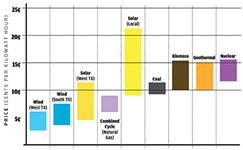The Hightower Report: A New Home for Poverty in America
A new home for poverty in America
By Jim Hightower, Fri., May 31, 2013
It's been nearly 50 years since poverty in America was a front-burner issue on our nation's political agenda – and it's time to move it up again.
Even as those at the top of our society have grown fabulously richer in the past decade, those in the economic middle have seen incomes stagnate and fall, opportunities decline, and poverty become not about someone else, but about them. Numbers that were not even imaginable half a century ago are now our cold reality – 50 million poor people, 51 million more who are "near poor," almost one-in-four children under 5 years old living in poverty, and no sign of this mass decline decelerating.
The face of American poverty, however, has changed somewhat. In the Sixties, the poor had largely been born into it and were out of most people's sight – tucked away in backwater rural counties and isolated urban ghettos. This kind of poverty persists, but today's big jump in numbers comes from families that have been knocked down from a middle-class life – dismayed to find themselves among the long-term unemployed, grabbing at temporary low-paying jobs, and buying meager groceries with food stamps.
These are the new poor, but they also constitute a new demographic phenomenon: the suburban poor. Once the secure base of the middle class, suburbs have become the fastest-growing home of American poverty. Since 2000, the number of suburban poor has surged by 64%, twice the rate of urban poor. By 2011, America's suburbs held 3 million more poor people than were in our core cities.
American poverty is no longer about "them," but us – people in our own close circles, living where we live. To learn more about it in your area, check out a new report by the Brookings Institution, titled "Confronting Suburban Poverty in America": www.brookings.edu.
For more information on Jim Hightower's work – and to subscribe to his award-winning monthly newsletter, "The Hightower Lowdown" – visit www.jimhightower.com. You can hear his radio commentaries on KOOP Radio 91.7FM, weekdays at 10:58am and 12:58pm.
Got something to say on the subject? Send a letter to the editor.










